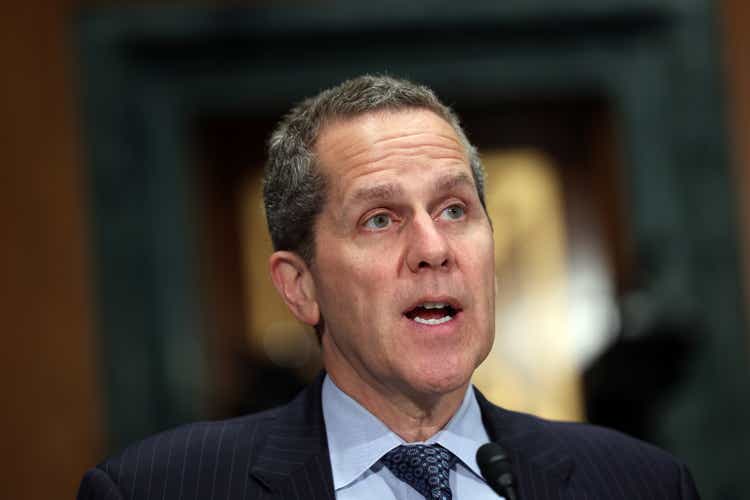U.S. banking giants’ face 9% capital hike in revised plan, half of original target

Kevin Dietsch/Getty Images News
The largest U.S. banks, known as global systemically important banks (GSIBs), would encounter a 9% increase in capital requirements in a revised bank-capital overhaul unveiled Tuesday by Federal Reserve Vice Chair for Supervision Michael Barr. That’s well below the 19% capital hike regulators floated in the original plan.
The Fed’s regulatory head said that regulators will release revised, softened versions of the Basell III endgame rule and a separate capital rule for large, high-risk lenders. This marks a victory for Wall Street banks, which have pushed back against substantial increases in capital requirements.
Banks with assets trailing $250B will all be virtually exempt from the Basel rule, Barr noted. He did not specify when the Fed is likely to propose the new Basel draft.
“There are benefits and costs to increasing capital requirements. The changes we intend to make will bring these two important objectives into better balance, in light of the feedback we have received,” he said in a prepared speech at the Brookings Institution in Washington, D.C.
The initial proposal, first introduced by regulators in July 2023, applies chiefly to financial institutions with assets that exceed $100B.
In June, the Fed offered a much lighter version of capital rules for large U.S. banks that suggested boosting required capital by as low as 5%. That compared with the overall 16% increase it originally proposed.
The too-big-to-fail banks were trading mostly in the red in Tuesday morning trading, with JPMorgan Chase (NYSE:JPM) sliding 4.9%, Citigroup (NYSE:C) shedding 3.1%, Goldman Sachs (NYSE:GS) -3.7%, Bank of America (NYSE:BAC) -1.4% and Morgan Stanley (NYSE:MS) -2.1%. Wells Fargo (NYSE:WFC), meanwhile, managed to eke out a 0.4% gain.